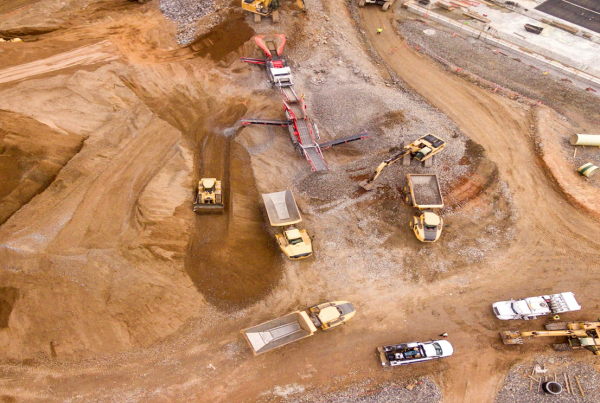Scientists argue that residents of Earth have little time to stop the worst of climate change. Whilst we can prevent the worst by limiting global warming to 1.5° Celsius in the coming years, it will require significant change in behavior.
As we can no longer mask the dire repercussions of global warming, sustainability has come to the forefront of how individuals and businesses make decisions. Whilst consumers are holding companies accountable for their carbon emissions, individuals are demanding action from their governments and, in turn, governments are introducing relevant policies.
One such influential organization is the Task Force on Climate Related Financial Disclosures (TCFD), as its reporting gives investors and lenders a better view of companies’ outlooks on climate change and carbon emissions.
What Is TCFD?
The TCFD’s objective is to increase business transparency details. It does so by tracking a company’s measures to mitigate climate change, and then sending respective reports to investors about climate change efforts so they can make informed decisions about whether to continue offering financial support.
The organization was established by the G20’s Financial Stability Board (FSB) in 2015, the successor to the Financial Stability Forum. It is chaired by a powerful international figure – Michael R. Bloomberg, the co-founder of Bloomberg L.P. and three-term mayor of New York City who ran for United States presidency in 2020.
What Does the TCFD Look for?
The TCFD has a framework for companies to follow so lenders, investors and insurance underwriters can comprehensively understand their operations. These recommendations are:
- Governance: Businesses to detail how the board manages climate risks & opportunities
- Strategy: Disclosure on an organization’s climate change risk assessment for the short, medium, and long term
- Risk management: Businesses detail how they manage climate risks and how they fit into their processes
- Metrics and targets: Gauge how the company fares with greenhouse gas emissions, consider its metrics and how they align with the company’s risk management processes
Why Is TCFD Important?
Organizations like the TCFD have become essential to the health of the planet and the global economy. Climate change presents unbelievable risks to the world, both financially and environmentally. Unfortunately, little time remains before the Earth sees a devastating impact. Research shows the world will lose about 10% of its economic value if global warming continues.
The Paris Agreement — established in 2015 — set standards for how countries should combat climate change. Those accords and the Net Zero Coalition have over 100 members but failing to reach those standards will further damage the environment and economies.
The TCFD has become more critical than ever because of global warming fears. Climate change’s effects have inspired people worldwide to be more conscious about how they directly impact the environment, and in fact consumers are wielding their power to influence companies domestically and internationally to introduce better practices. About 85% of people say they have changed their purchasing habits to become more sustainable. A third of the world’s population says they’re willing to spend more on these products for the environment’s sake.
What Are the TCFD Implications in Asia?
Asia is a critical part of the world to watch because the continent is more vulnerable to climate change risks than most other regions worldwide. The Swiss Re Institute’s research studied the 48 countries representing 90% of the world’s economy. It ranked them based on their resilience to climate change. The bottom five countries in the ranking are all in Asia. Thailand, India, the Philippines, Malaysia, and Indonesia rank 44th through 48th, respectively.
The TCFD has positively impacted Asian countries because more companies on the continent have started to submit climate change reports. In 2019, about 25% of Asia-Pacific firms disclosed their climate change risks and opportunities. That number increased to 34% in 2020 and 36% in 2021.
How Does the TCFD Affect Europe?
Countries in Europe are less vulnerable to climate change than their Asian counterparts. For example, Finland ranks as the most resilient country to climate change. Nations like Austria, Portugal, Sweden, and Norway are also in the top 10 for resilience. Finland is a world leader in fighting global warming because it has improved its infrastructure with electricity and dams. Though, other countries like Poland and Czechia aren’t faring as well.
The TCFD has positively affected Europe, with this continent having the highest growth rate in climate change disclosures. European companies averaged about 60% for the recommended disclosures in 2021, a stark increase from 37% in 2019.
Some European countries have taken the step of mandating TCFD reports, and in April 2022, the U.K. became the first country in the G20 to implement such a law. Other nations like the United States, Switzerland, Japan and more have made plans for their mandates by 2025.
How Does TCFD Affect the Building Community?
One sector that TCFD reporting can benefit is the building community. Construction is essential worldwide, providing the necessary infrastructure for people and businesses to function. The supply chain for many building companies stretches worldwide with a diverse set of materials and products. Complying with TCFD reporting will make the construction industry thrive in the coming decades.
Construction companies may be vulnerable as investors and other entities want to switch to more sustainable materials. One of these risks is carbon pricing policies, which can increase costs for the building community. Then there are the physical risks.
A rise in extreme weather events could slow down the supply chain, cause delays in operations and damage assets. TCFD reporting will help construction companies reduce their carbon footprint and set the stage for other industries by creating sustainable and climate-resilient infrastructue.











